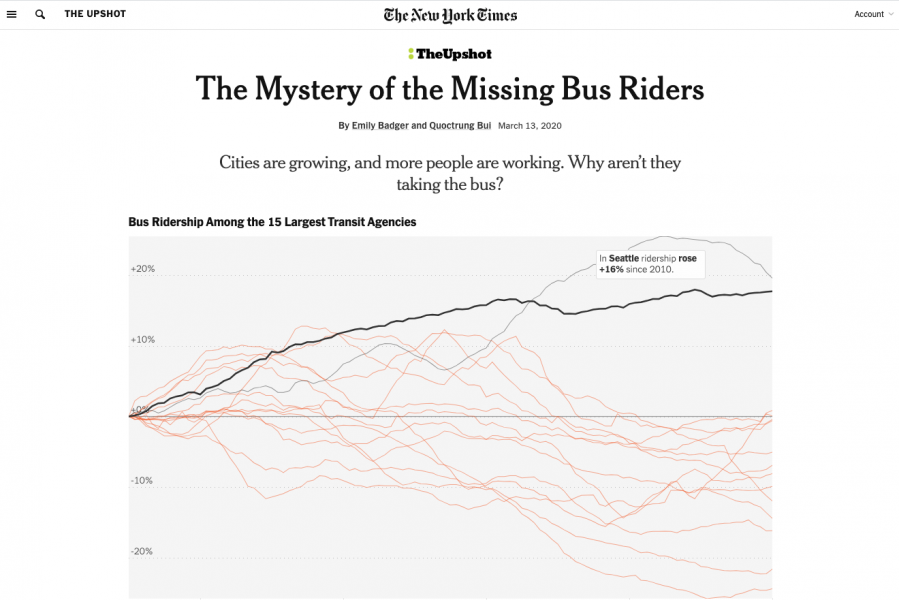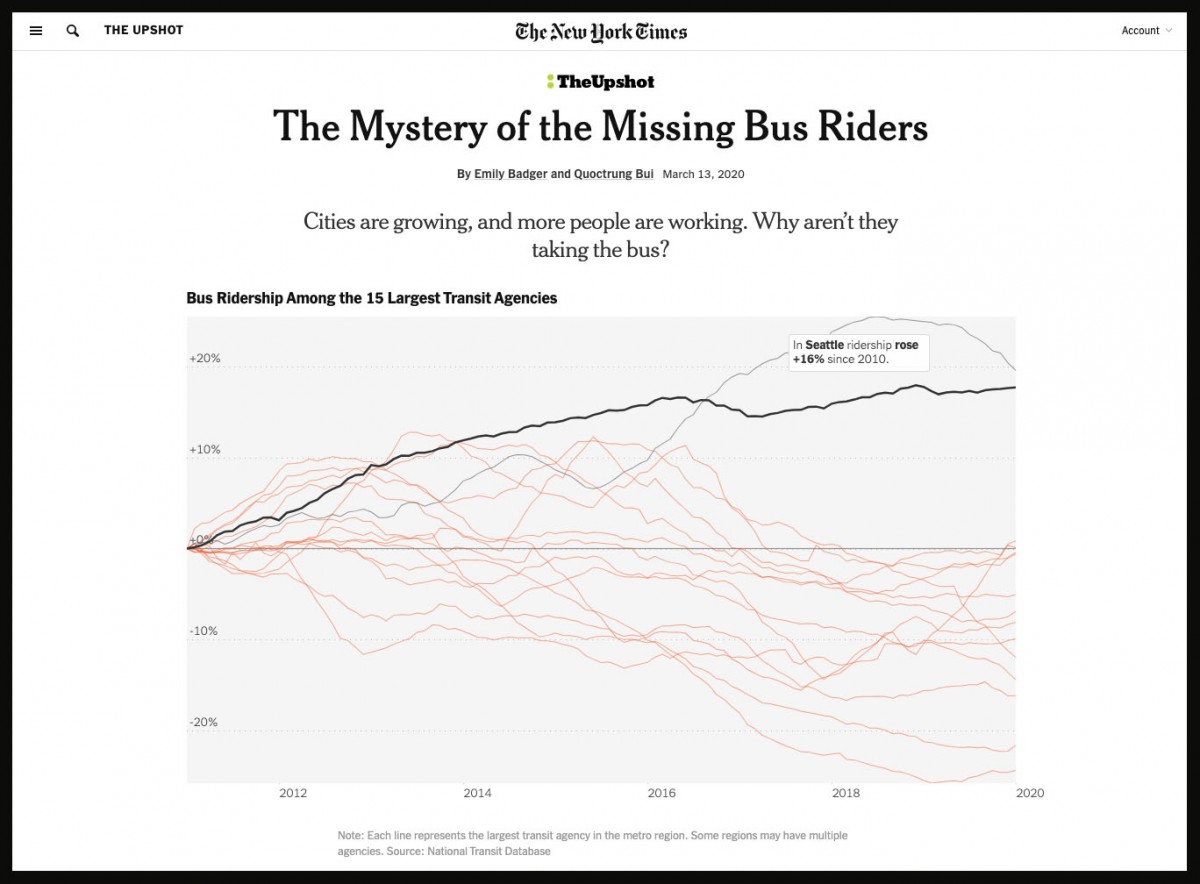
 |
Researchers at Georgia Tech's School of Civil and Environmental Engineering who have been studying the decline of bus ridership have found a demographic clue that could explain declining bus ridership numbers.
Kari Watkins, the Frederick Olmstead Law Associate Professor, and Simon Berrebi, a post-doctoral fellow, compared bus-stop data going back to 2012 in Minneapolis, Atlanta, Miami and Portland, Ore., four notably different areas where transit agencies automatically count passengers as they board the bus.
From The New York Times:
In Miami and Atlanta, neighborhoods with more college-educated residents had steeper declines in bus ridership. And one demographic pattern appeared across all four cities: Whiter neighborhoods have been losing the most ridership.
“That made us think, ‘What are the changes in the behaviors of people who are white?’” Mr. Berrebi said.
He and Ms. Watkins believe they may be taking greater advantage of new alternatives to the bus, like Uber and Lyft or bike-sharing. Other research shows that bike-sharing has eaten into bus ridership (while surveys in some cities report that bike-sharing riders skew highly educated and white).
Studies have been less conclusive on the effect of ride-hailing companies, in part because their user data hasn’t been accessible to researchers. But preliminary findings from a continuing project through the Transportation Research Board show that the largest declines in transit ridership at the metro level can be attributed to the introduction of ride-hailing services. And in the largest cities, ride-hailing has affected buses more than rail.
Mr. Berrebi and Ms. Watkins also suggest that white and more educated residents may have more access to flexible or remote work in an environment where the nature of work is shifting for everyone.
“We don’t go to work in the same way that we traditionally have,” Ms. Watkins said. “We’re doing it at more odd hours. More people are teleworking now. All of this is morphing in ways such that ‘I’m going to buy a monthly transit pass’ is kind of disappearing.”
Read the full article from The New York Times.
